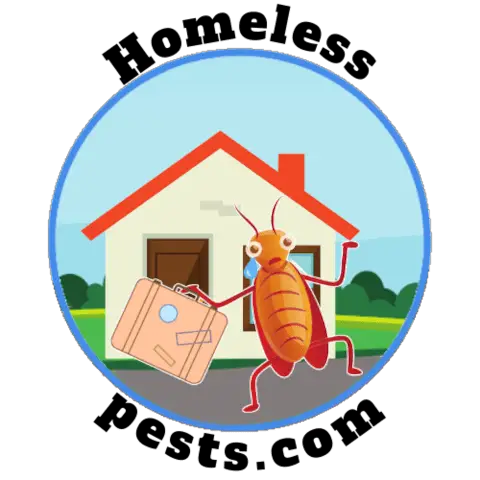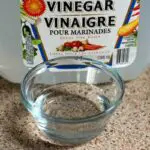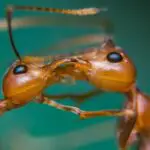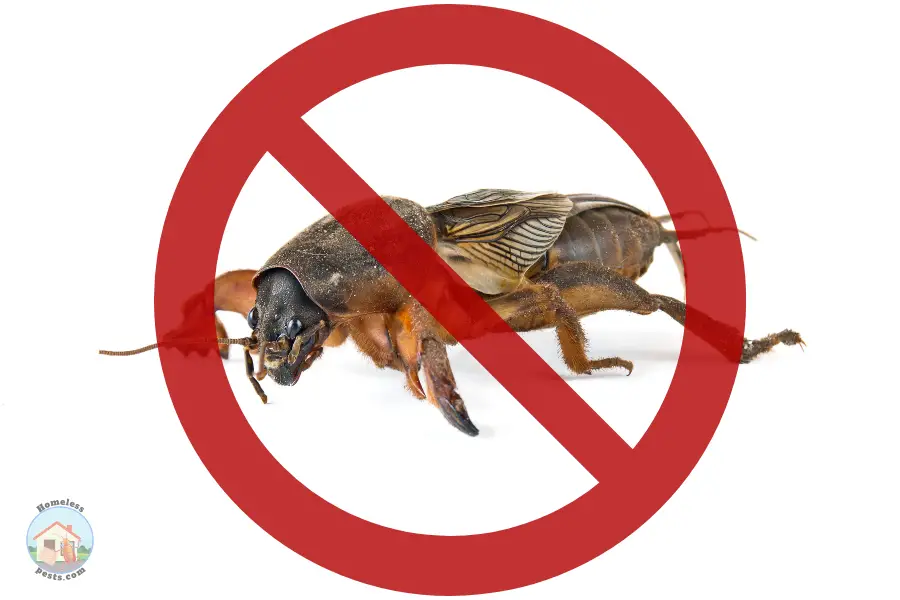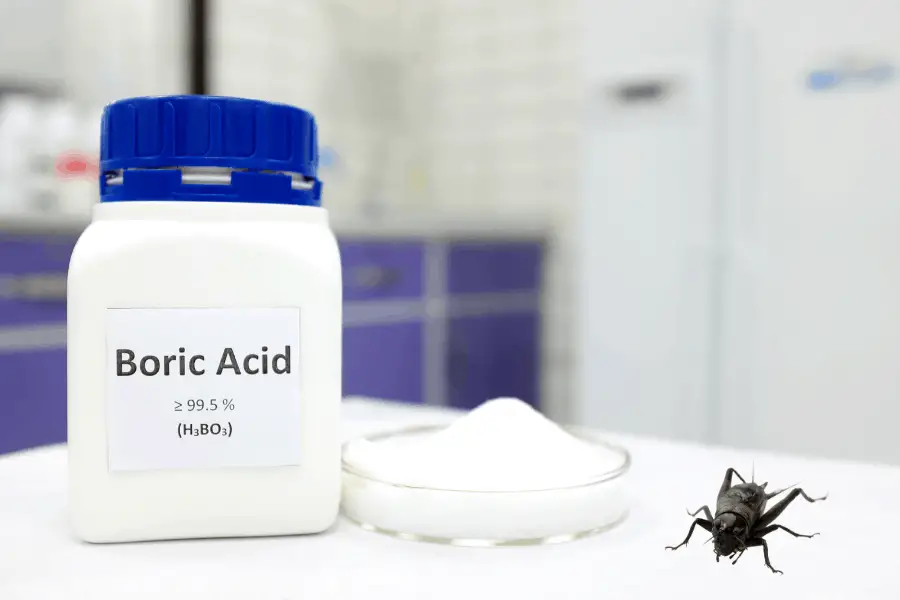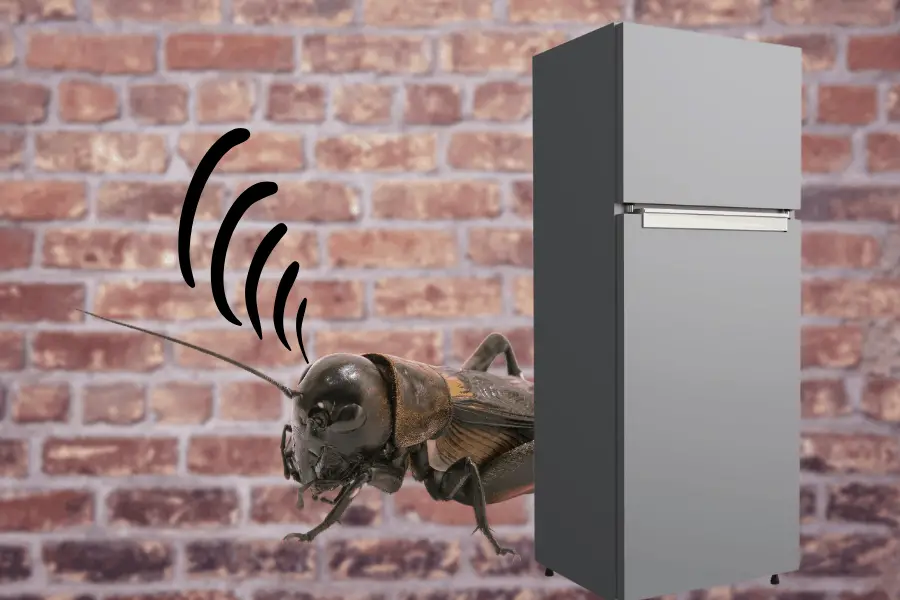As a pest control enthusiast and homeowner, I am well aware of the annoyance caused by crickets infiltrating homes during winter and taking over living spaces. While crickets are famous for their chirping melodies, many are oblivious to the troubles they bring indoors. In this comprehensive guide, I will walk you through the four main steps to identify, locate, treat, and prevent cricket infestations, ensuring your home remains cricket-free throughout the year.
Crickets come in diverse species, varying in size from a tiny 0.1 inch to a formidable two inches. Their flat and elongated bodies can display colors ranging from yellowish-brown to tan and dark brown. What distinguishes them are their noticeably larger hind legs, perfect for impressive jumps. These agile insects possess two large compound eyes and three additional simple eyes, often overlooked by most people.
To rid your home of crickets, we will first embark on an inspection journey. Wait for fall nights when crickets are most active, listen for their chirping sounds, and closely examine the exterior for potential entry points, such as vents, wall openings, cracks, doors, and windows.
Inside, search for crickets and their eggs in closets, behind appliances, and under furniture, while being mindful of fabric damage caused by these critters. Armed with this knowledge, we will proceed with targeted treatments and effective preventive measures, ensuring your home remains a peaceful retreat, free from cricket invasions.
Products you will need for crickets:
Tempo SC Ultra

Shop on Amazon for the best deals
Cy-Kick Aerosol

Shop on Amazon for the best deals
Garden Safe Insect Killer

Shop on Amazon for the best deals
Identifying Crickets
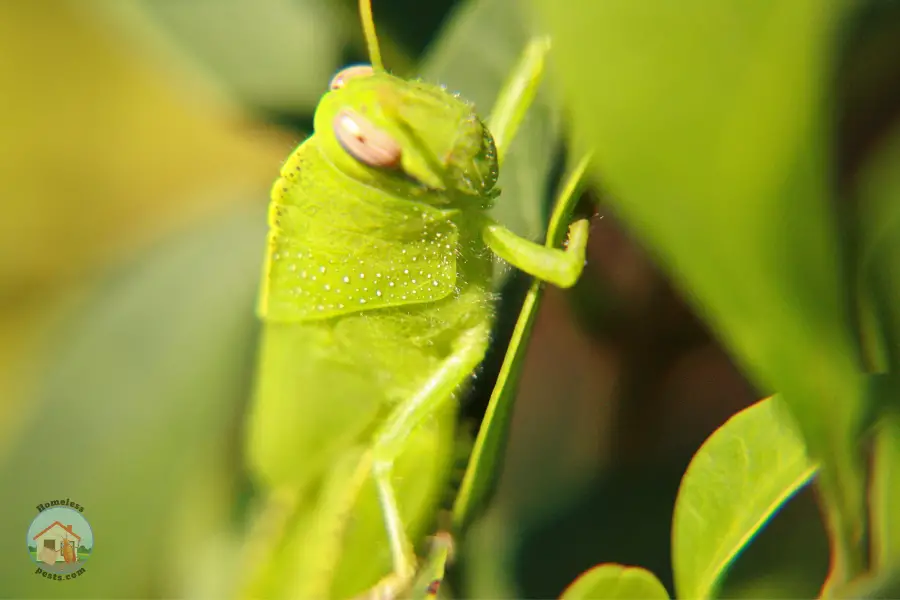
Crickets may seem like tiny creatures, but their diverse species and characteristics can be crucial in effectively dealing with an infestation. Let’s delve into the details of identifying these pesky intruders and understanding their behavior.
- Types of Crickets and Their Sizes Cricket Species Size Range (Inches) House Cricket 0.1 – 0.5 Field Cricket 0.5 – 0.7 Camel Cricket 0.6 – 1.25 Tree Cricket 0.4 – 0.6 Snowy Tree Cricket 0.4 – 0.6 Jumping Bush Cricket 0.3 – 0.6 Note: The sizes mentioned above are approximate and can vary based on species.
- Physical Characteristics: Color, Body Shape, and Legs Crickets have elongated, flat bodies with varying colors. They can range from yellowish-brown to tan, with some species displaying darker brown hues. One of their most distinctive features is their robust hind legs, used for powerful jumps. Additionally, crickets possess two large compound eyes on their head, which provide them with excellent vision. They also have three more simple eyes, often unnoticed by most people, but contributing to their keen sense of the environment.
Understanding the different cricket species and their physical characteristics enables us to tailor our treatment approach effectively. Now, let’s move on to the next section to learn how to locate these agile intruders within your home and start the process of reclaiming your living spaces from cricket infestations.
Locating Crickets in Your Home
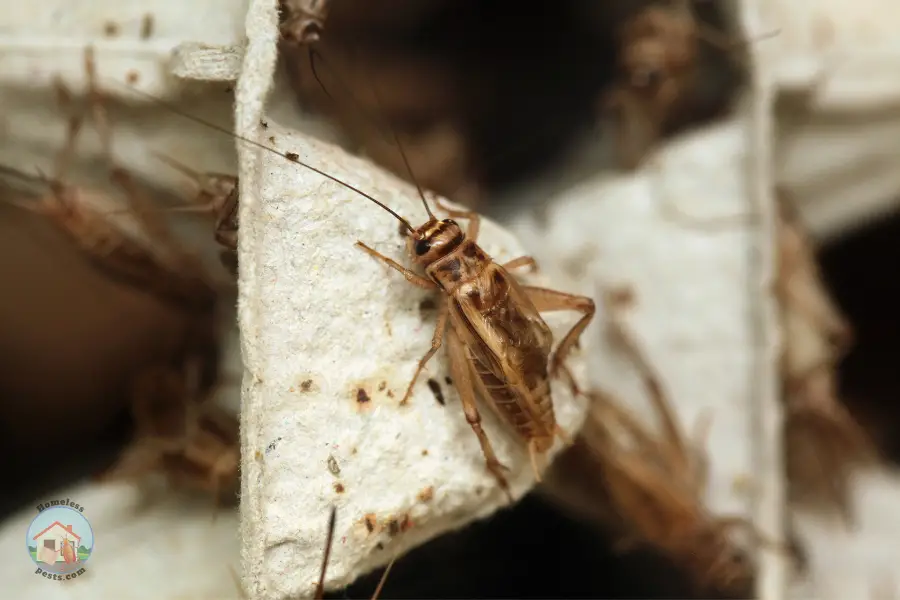
Listening for Cricket Chirps
One of the first steps in locating crickets indoors is to listen for their distinct chirping sounds. Crickets tend to chirp more frequently in warmer conditions, so try turning on your heater to encourage them to vocalize. Wait until fall and night when crickets are most active, and listen carefully for the chirping sounds coming from inside your home. This will give you a good indication of their presence and their general whereabouts.
Exterior Inspection: Entry Points and Vulnerable Areas
Start your inspection outside your home and look for potential entry points that crickets can use to gain access. Crickets are skilled jumpers and can leap up to three feet, so pay close attention to vents, openings in walls, cracks, doors, window frames, and utility pipes. Any small gaps or holes near the ground can also serve as entry points for these agile insects.
Interior Inspection: Common Hiding Spots and Signs of Infestation

After inspecting the exterior, move indoors to identify common hiding spots where crickets may take shelter. Crickets prefer warm and dark areas, so check behind and under large appliances that generate heat, such as refrigerators, ovens, and water heaters. Don’t forget to inspect areas with plumbing, as crickets can find refuge in spaces around pipes. Additionally, check behind electrical plates and around light fixtures, as these can be cozy spots for crickets to hide.
Look for signs of cricket activity, such as eggs and damage to fabrics. Female crickets may lay eggs indoors, and these can be difficult to spot, as they are elongated and only about two to three millimeters in length. Pay close attention to closets where fabrics are stored, and examine furniture for chew marks, as crickets have been known to feed on cotton, silk, and other fabrics.
By conducting a thorough inspection both inside and outside your home, you’ll be better equipped to identify the extent of the cricket infestation and formulate an effective plan for treatment. In the next section, I’ll introduce you to powerful products that will help in reclaiming your home from these unwanted intruders.
Effective Treatment for Cricket Infestations
Dealing with a cricket infestation requires a targeted and systematic approach to ensure effective control. In this section, I will introduce you to three powerful products that will help you reclaim your home from these resilient invaders.
Using a Liquid Repellent Insecticide
ENVU Tempo SC Ultra is a great product for crickets. What sets it apart is its impressive residual effect, lasting up to 90 days. This means you can rest assured knowing that your home will remain protected from invading insects for an extended period. The active ingredient, beta-cyfluthrin, delivers quick knockdown and eradication of pests, ensuring swift action against even the most persistent intruders.
The convenience of the 240ml size makes it a cost-effective option for homeowners seeking to address pest problems efficiently. Whether you’re dealing with crickets, ants, roaches, or other nuisance insects, Tempo SC Ultra proves to be a reliable defense against unwelcome invaders.
Having personally used Tempo SC Ultra, I can vouch for its efficacy and lasting results. As a homeowner, I found this product to be a trusted companion in combating various pests and reclaiming my living space from their intrusion. I wholeheartedly recommend ENVU Tempo SC Ultra to anyone in need of a powerful and reliable pest control solution. Trust me; it will not disappoint.
Perimeter Treatment: Application Steps and Tips
To create a protective barrier around your home, start by mixing one ounce of Tempo SC Ultra with a gallon of water in a pump sprayer. Begin spraying three feet up the structure and three feet out from the foundation, covering potential entry points like windows, doors, eaves, air vents, plumbing, garage doors, light fixtures, and openings to basements or crawl spaces. This perimeter treatment will act as a deterrent, preventing crickets from gaining access to your living spaces.
Indoor Treatment with aerosol: Flushing Out Clusters
Cy-Kick Aerosol is an effective insecticide aerosol that delivers a quick knockdown, making it ideal for flushing out clusters of crickets indoors. When applying Cy-Kick, ensure the white applicator is attached for broader areas such as around windows. For tight cracks and crevices, use the provided red applicator tip, making sure the straw is securely affixed. Keep people and pets away from treated areas until they are dry and vapors have dispersed.
Garden Safe Insect Killer: Long-lasting Control for Hard-to-Reach Areas
For hard-to-reach areas, Garden Safe Insect Killer is the perfect solution. This ready-to-use insecticide dust provides long-lasting control, lasting up to eight months when undisturbed.
Use a handheld duster to apply Garden Safe Insect Killer under appliances, behind baseboards, in voids behind electrical plates, and in the attic. Its lingering effect ensures crickets won’t make a comeback in these hidden spots.
By employing these professional-grade products and following the recommended application techniques, you can significantly reduce cricket populations and prevent future infestations. However, to ensure a long-term solution, we need to take preventive measures to secure your home against these agile invaders. In the next section, I’ll share essential tips for keeping crickets at bay and safeguarding your living spaces.
Preventing Future Cricket Infestations
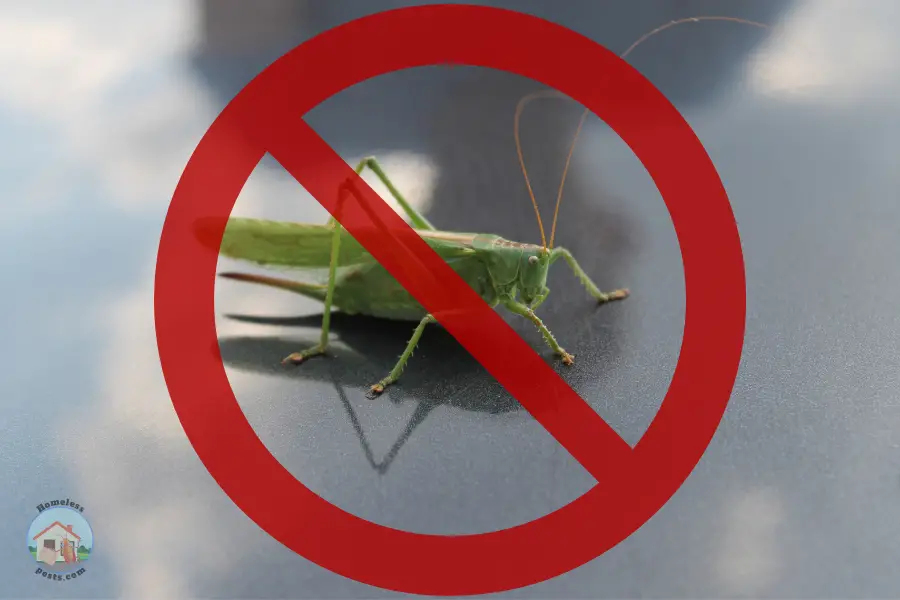
Having successfully treated the current cricket infestation, it’s essential to take proactive measures to prevent these unwanted guests from returning to your home. Follow these preventive steps to create an inhospitable environment for crickets and maintain a cricket-free living space.
Closing Entry Points: Using Copper Mesh and Caulk
Thoroughly inspect the exterior of your home and identify any small gaps, cracks, or holes that crickets can exploit to gain entry. Seal these entry points with copper mesh and caulk to block off their access. Crickets cannot chew through copper mesh, making it an effective deterrent.
Repairing Damaged Screens and Door Seals
Damaged window screens and door seals provide easy access for crickets to sneak inside. Regularly check and repair any tears or gaps in screens and door seals to keep these agile insects at bay.
Trimming Vegetation: Keeping Crickets at Bay
Crickets are attracted to vegetation around your home, especially if it provides cover and easy access to entry points. Trim back vegetation, including overhanging branches from nearby trees, to reduce potential hiding spots for crickets.
Regular Application of liquid repellent: Ensuring Cricket-Free Living
To maintain a cricket-free home throughout the year, make it a routine to apply Tempo SC Ultra every 90 days. Regular treatments will create a strong barrier that repels crickets and other pests from approaching your property.
By implementing these preventive measures and adhering to regular treatments, you can ensure a comfortable and cricket-free living space for you and your family. Keep in mind that maintaining a proactive approach is essential, as it will help you enjoy your home without the constant annoyance of crickets.
In conclusion, with the knowledge gained from this guide and the powerful professional products mentioned, you can take control of any cricket infestation. Remember, a thorough inspection is the foundation for effective treatment, and preventive measures are your shield against future cricket invasions. Wishing you a peaceful and pest-free home, and don’t hesitate to reach out if you need any further assistance in cricket control and pest management.
Taking Charge of Cricket Infestations
Congratulations! You are now equipped with the knowledge and tools to effectively combat cricket infestations and safeguard your home against future invasions. By following the four main steps of identification, location, treatment, and prevention, you can maintain a cricket-free living space year-round.
Through careful inspection, you learned to identify various cricket species and their distinct physical characteristics. Armed with this understanding, you can now tailor your treatment approach to target these agile invaders effectively.
Locating crickets within your home became easier as you listened for their chirping sounds and inspected both the exterior and interior for potential hiding spots and signs of infestation. By understanding their behavior, you’ve gained an advantage in implementing precise treatments.
The application of professional-grade products, such as Tempo SC Ultra, Cy-Kick Aerosol, and Garden Safe has proven to be a powerful combination in eradicating crickets and securing your home against their return.
Furthermore, with preventive measures like sealing entry points with copper mesh and caulk, repairing damaged screens and door seals, trimming vegetation, and regularly applying Tempo SC Ultra, you have established a robust defense against future cricket infestations.
Remember, proactive pest control is key to maintaining a peaceful and pest-free living space. Regular inspections, treatments, and preventive actions will ensure your home remains a sanctuary, free from the disruptive presence of crickets.
If you encounter any challenges or need professional assistance, don’t hesitate to reach out to pest control experts like me. We are here to support you in reclaiming and safeguarding your home from unwanted intruders.
Thank you for joining me on this journey to cricket control and prevention. With the knowledge and tools gained, you can confidently create a harmonious and pest-free living environment. Now go forth and enjoy your home without the bothersome chirping of crickets!
